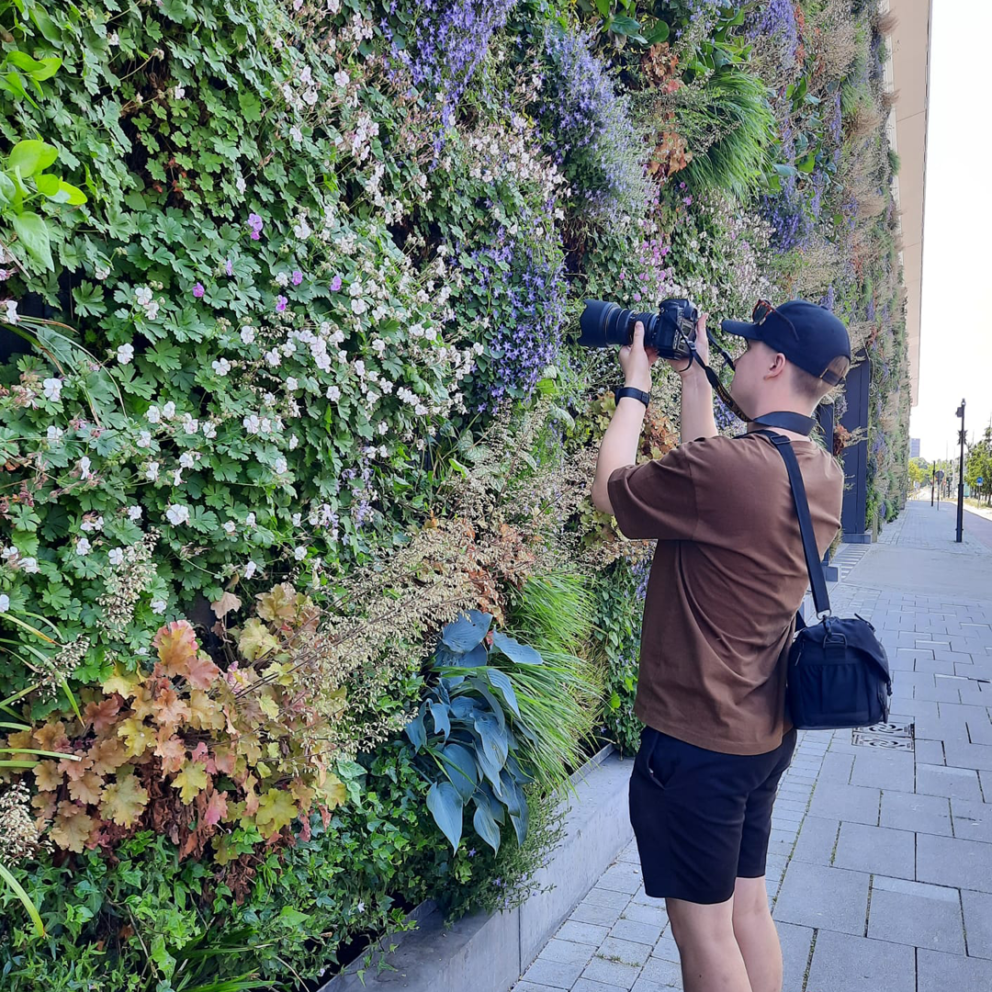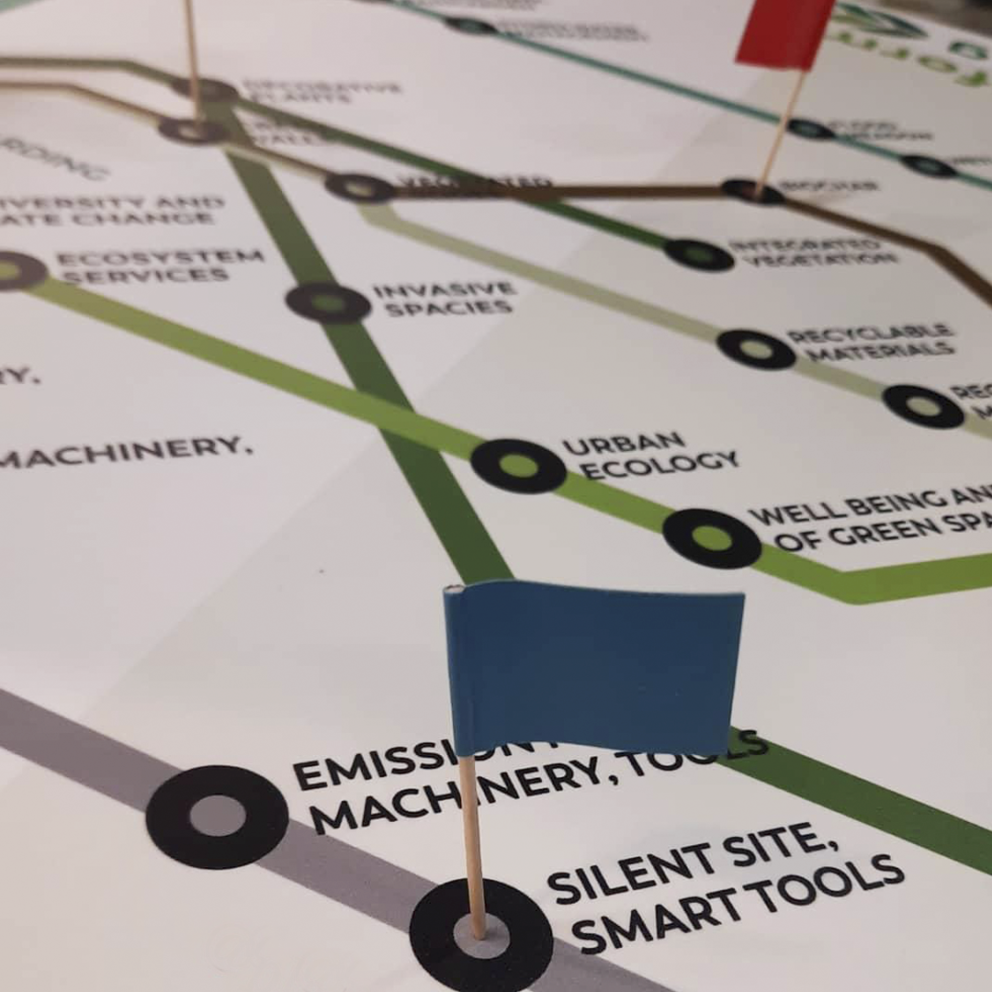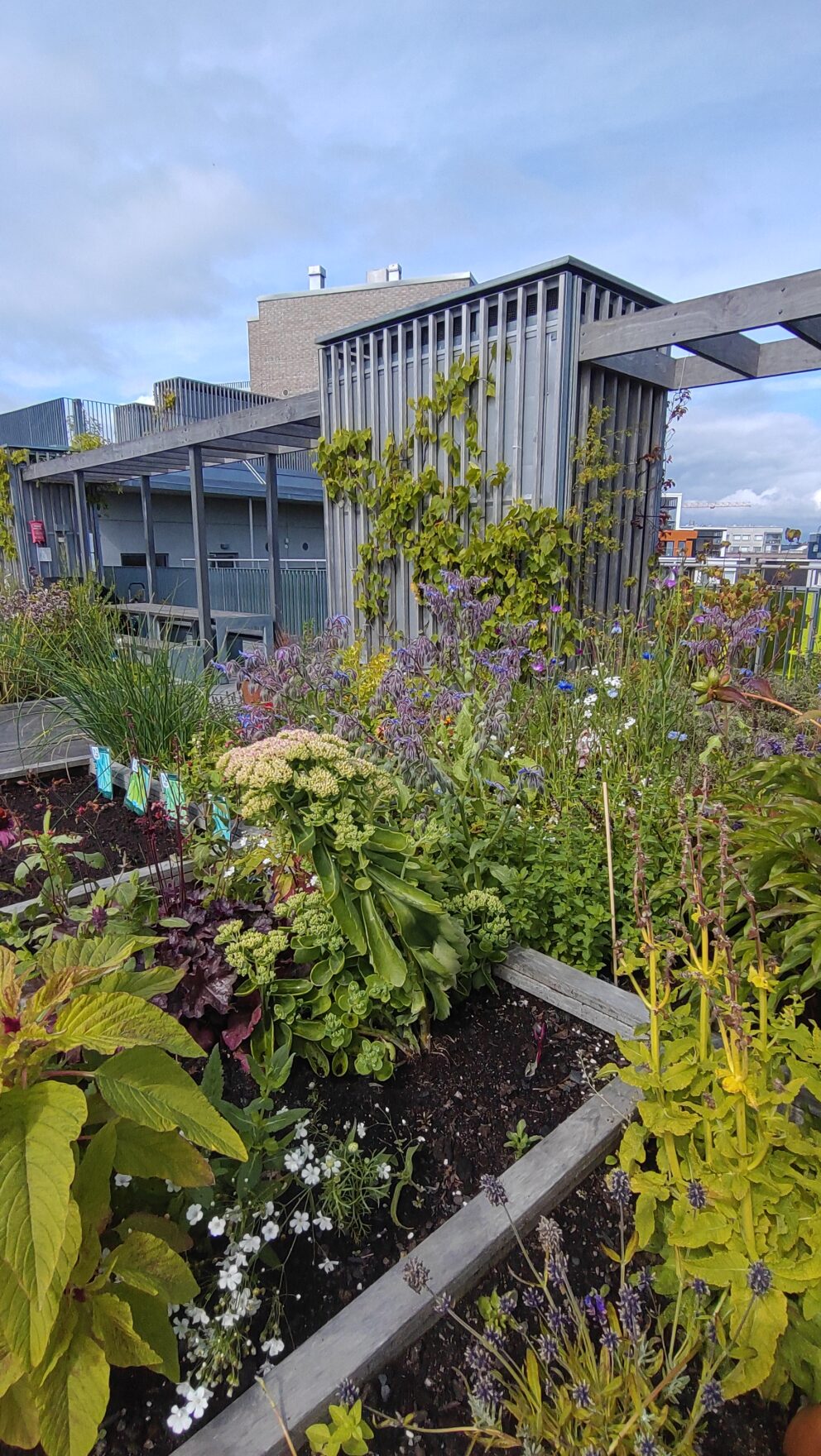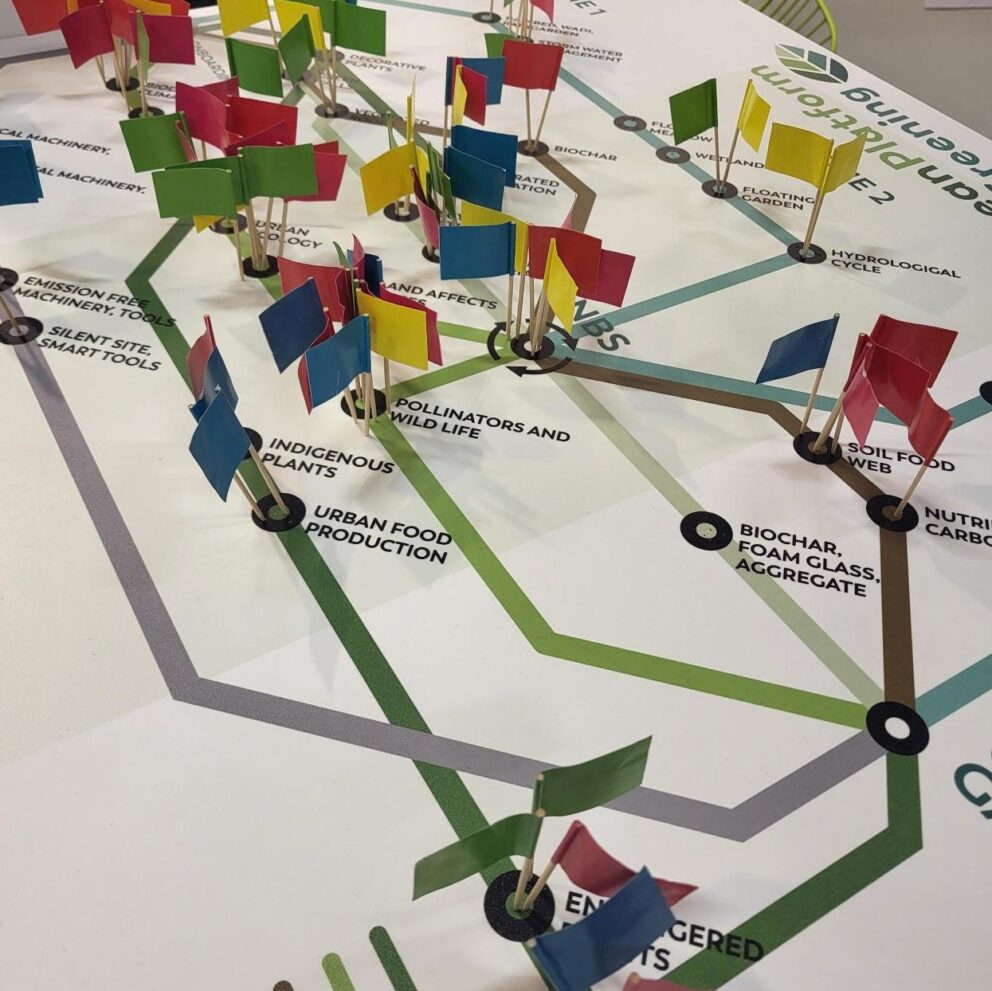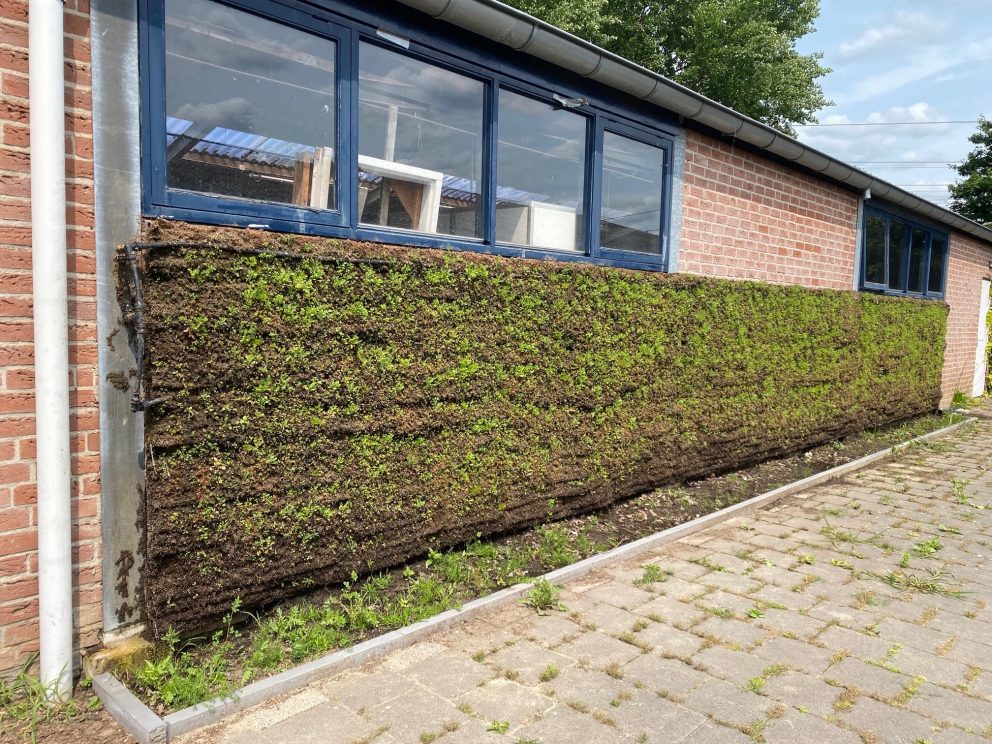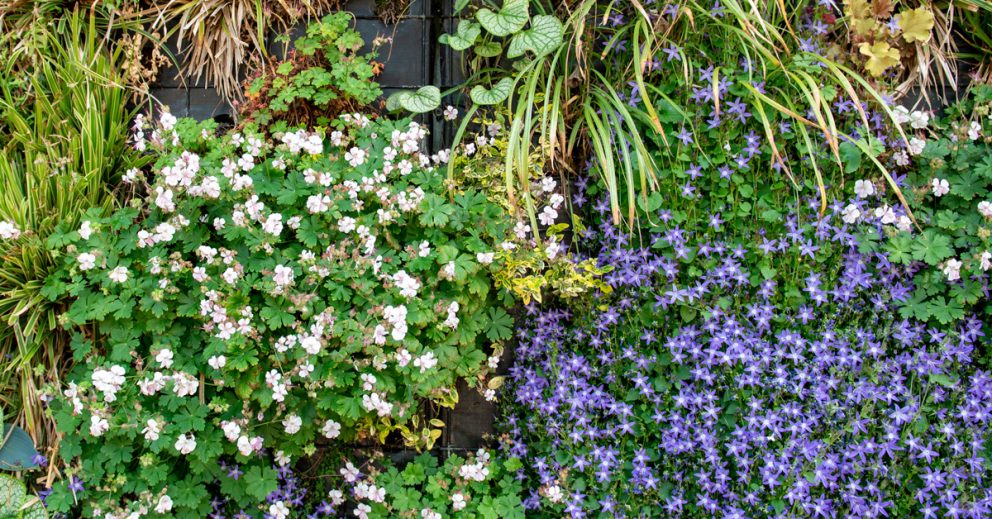In the European Platform for Urban Greening project, we are developing horticulture education to meet the needs of the future. In the 2023 period, we have been gathering innovative ideas and working on a virtual learning environment.
The educational field has undergone major changes in recent years. Teachers are striving to engage learners in deep and meaningful learning, and new teaching methods abound. For example, blended learning methods are an innovative way to promote student success. These methods generally promote hybrid learning, combining face-to-face and distance learning. Blended learning methods include group and self-study situations for students and their variations, the use of virtual learning environments, teamwork and the use of individual learning pathways.
What is innovation and innovative learning? In short, innovation is the ability to think creatively and develop new ideas. In other words, it enables us to create something new and to improve on existing practices. An innovative person is able to introduce new things and new ways of doing things. An innovative teacher, on the other hand, is able to assess the development needs of his or her own teaching, reflect these needs in the light of developments in the field and adopt new practices that meet the needs of teaching development. Thus, innovative learning and blended learning methods go hand in hand in a mutually supportive way.
Also in the European Platform for Urban Greening project, in work package 6, we set out to explore innovative learning and its methods and started to build a virtual learning environment. First, we collected from the project partners the different examples of innovative learning, approaches and blended learning methods they were already using. These highlighted different digital and hybrid solutions (learning platforms used by educational institutions, e.g. Moodle and different virtual workspaces such as Whiteboard), different pedagogical approaches (such as team learning and group work) and school-business collaboration (everyday challenges and wishes from both businesses and educational institutions).
On this basis, we set out to design a vertical green virtual learning environment that supports hybrid learning and serves as an innovative platform for diverse learners in the green sector. Before building the virtual platform, we collaborated with project partners to develop the Vertical Green Learning Outcomes for European Qualifications Framework (EQF) levels 3 & 4. These levels are the most commonly represented in the project partners’ educational institutions and in the business world. The learning outcomes for level 3 were defined in 2022 and for level 4 they were finalised in spring 2023. This groundwork was important as it provided guidelines for the compilation of the virtual learning material.
See the learning outcomes on EQF level 3 here.
See the learning outcomes on EQF level 4 here.
Different learners and targets
When building a virtual learning environment, it was also good to take into account the different types of learners. How can we in the green sector keep up to date with the changing needs of our sector and attract future generations? What kind of learning material should we produce and in what format? In this work, we were helped by identifying different types of learners and targeting our communication for these groups. Katapult and Groenpact have identified four different profiles that are attracted by specific learning styles and training provision. These four different profiles have also been a good guideline when creating our virtual learning environment – the entity provides something interesting for each profile!
The four profiles are (summarised here):
1. The ambitious pioneer
Ambitious pioneers enjoy their freedom both inside and outside work. They have an entrepreneurial spirit and a desire for continuous improvement. Ambitious pioneers seek knowledge independently, but also want to learn by talking and networking with others.
2. The ambitious tackler
Ambitious forgers want to follow the development of the green sector. They like to read industry news and aspire to management positions or entrepreneurship. They value concrete learning goals and work towards them step by step.
3. The down-to-earth factor
Down-to-earth people like routine and regularity in their work and studies. They value a good team spirit and are happy to help colleagues. They do not necessarily create a career, but they like to be given space to discover their strengths and develop their skills, for example through short courses.
4. The knowledgeable explorer
Conscious explorers want to create a more beautiful and sustainable world through their work. They feel they have a stake in society and in their local green spaces and therefore choose the green sector. For conscious explorers, personal development is more important than career development.
See the green profiles by Katapult and Groenepact here.
Digitalisation and the virtual learning environment
We use information technology in our daily lives every day. In education, digitalisation has also had a strong presence and is constantly evolving. The digital world makes teaching more accessible and adapts teaching to the needs of different learners.
For this reason, we saw digital as an opportunity to develop a virtual learning environment for vertical greening and an innovative curriculum. We feel that vertical green is an important part of the future of urban green. However, not many green students or professionals have access to this entity at their workplace, so the virtual learning environment is a good and safe platform to learn the basic principles of vertical greening. This will allow a variety of learners to explore the world of vertical greening and learn about vertical green structures, design and the vegetation used in these structures, among other things.
Work on the virtual learning environment started in early 2023, when we explored different options for the platform. The platform chosen was the versatile Wonda, which works in 360 virtual reality as well as in browsers on smart devices and computers. After selecting the platform, we started working on the learning material. In the spring we developed a script of the sites to be filmed and during the summer we went to film real innovative vertical green sites with our project partners in Denmark, the Netherlands and Finland. Not everyone normally has the opportunity to visit these sites, but the virtual environment makes this possible. Once the materials had been filmed, we moved on to work on the virtual environment and the learning package that would be built around it.
During autumn 2023, the vertical green virtual learning environment has been tested in Finnish as a beta version by students and we will continue to modify it based on feedback during winter 2023-2024, when we also plan to make different language versions for each project partner. The material will be easy to develop and adapt for future needs. New topics, tasks and perspectives can also be created to ensure that learners always have something new to experience. Each project partner can also link the material to their own learning platforms (e.g. Moodle) if they wish to use the material more intensively as part of their own learning modules.
Further plans include the development of an immersive room in Finland, AhlmanEdu, where the virtual learning environment and its materials come to life, to be experienced with all senses. This immersive space would also contribute to strengthening the international PoVE activities of the European Platform for Urban Greening project, allowing project partners to send students, teachers and representatives of business partners to Finland for vertical green learning. In this way, the international contacts established during the project would be maintained after the project.
